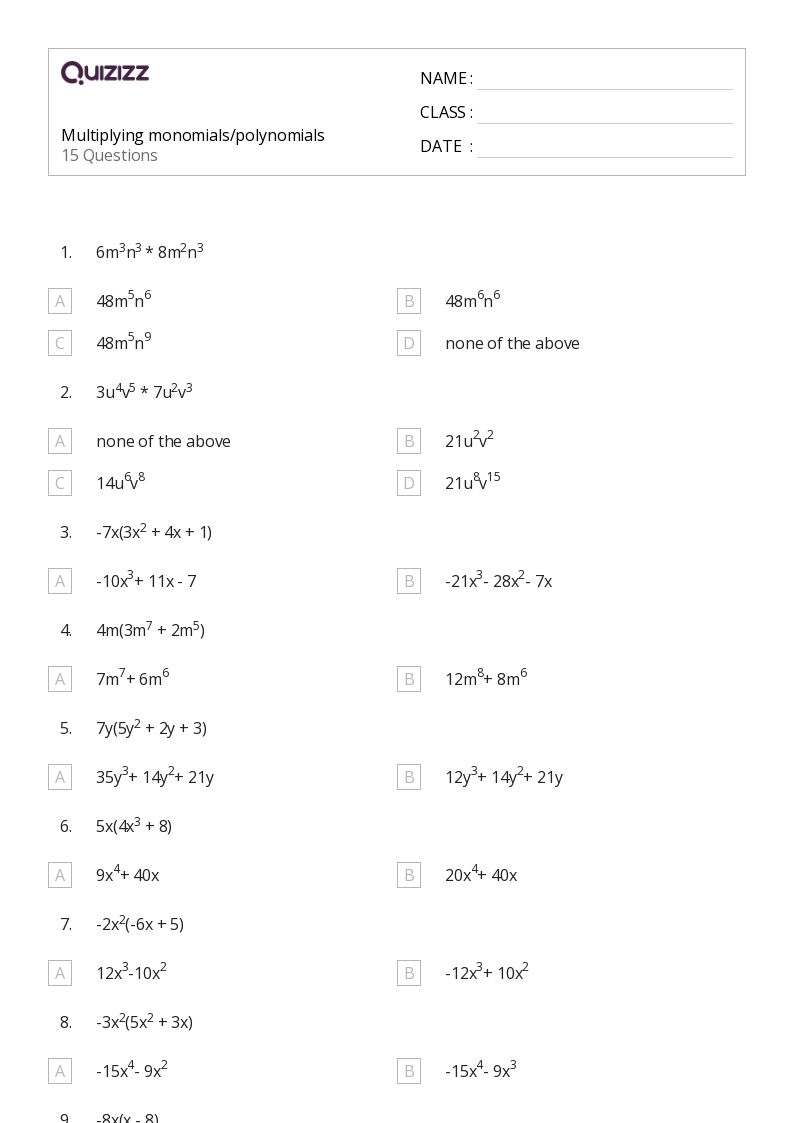
10 Q
7th - 9th

15 Q
9th

18 Q
9th

11 Q
8th - 9th

22 Q
8th - 9th

10 Q
9th - 10th

10 Q
8th - 9th

15 Q
9th - 10th

8 Q
8th - 9th

10 Q
8th - 9th

15 Q
9th

20 Q
9th - 10th

20 Q
7th - 9th

11 Q
7th - 9th

15 Q
9th

15 Q
7th - 9th

13 Q
9th - 12th

20 Q
9th - 11th

10 Q
9th - 10th

13 Q
9th

18 Q
9th

26 Q
9th

10 Q
9th - 12th

20 Q
6th - 9th
Explore Worksheets by Grade
Explore Worksheets by Subjects
Explore printable Monomials Operations worksheets
Monomials Operations worksheets are an essential tool for teachers looking to help their students master the fundamental concepts of mathematics. These worksheets provide a comprehensive and organized approach to learning, allowing students to practice and hone their skills in working with monomials. Math teachers understand the importance of providing engaging and challenging exercises for their students, and these worksheets offer just that. With a variety of problems and exercises, students will be able to grasp the concepts of addition, subtraction, multiplication, and division of monomials. Furthermore, these worksheets are designed to cater to different learning styles and abilities, ensuring that every student can benefit from them. Monomials Operations worksheets are a valuable resource for teachers who want to see their students excel in math.
Quizizz is an innovative platform that offers a wide range of resources for teachers, including Monomials Operations worksheets and other math-related materials. This platform allows teachers to create engaging and interactive quizzes, which can be used in conjunction with the worksheets to assess students' understanding of the concepts. Quizizz also provides teachers with valuable insights into their students' progress, allowing them to identify areas where additional support may be needed. In addition to Monomials Operations worksheets, Quizizz offers resources for various other math topics, ensuring that teachers have access to a comprehensive suite of tools to help their students succeed. By incorporating Quizizz into their lesson plans, teachers can create a dynamic and effective learning environment for their students, leading to improved outcomes in math education.
